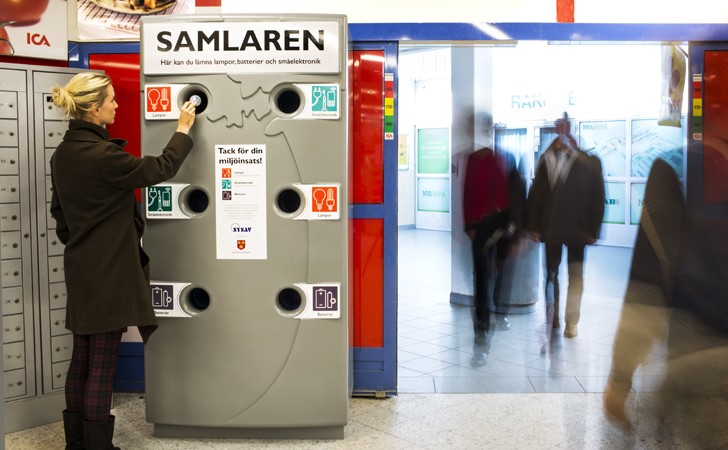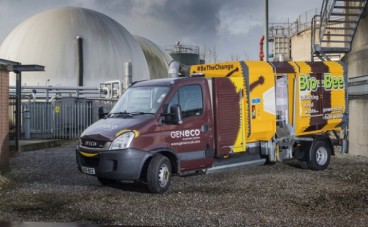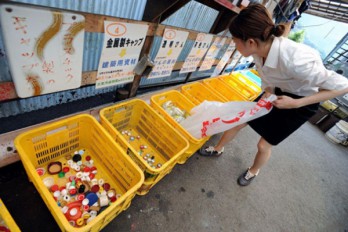Due to Sweden’s revolutionary recycling program, the country needs to import 800,000 tns of waste annually to feed its 32 waste-to-energy plants

The energy goes into a national heating network to heat homes throughout the winter and is also used to produce electricity
The energy goes into a national heating network to heat homes throughout the winter and is also used to produce electricity
Sweden is a pioneer in waste recycling and this was attained via various practices that have been going on for years. The numbers speak for themselves: 1.5 billion bottles and cans are recycled annually, when the country’s population does not exceed 10 million. And even though the Swedish produce 461 kilograms of waste on average per year (close to the European average), less than 1% of the country’s household waste is sent to landfills since 2011. Waste that cannot be reused or recycled, usually ends up to waste-to-energy (WTE) incineration plants which produce both thermal energy and electricity. The heating needs of approximately 950,000 homes are covered via WTE plants, while 260,000 homes are provided with electricity.
These efficient garbage-management processes resulted in a lack of sufficient quantities of waste to run the country’s 32 WTE power plants, so it had to import from other countries. The Swedish, taking advantage of the fact that a number of European nations don’t have the capacity to incinerate garbage themselves, developed a highly-profitable business and almost 800,000 tons of garbage from the UK, Ireland, Italy, Norway and other countries are imported annually in order to cover the domestic lack of waste. “A good number to remember is that three tons of waste contains as much energy as one ton of fuel oil … so there is a lot of energy in waste,†said Göran Skoglund, spokesperson for Öresundskraft, one of the country’s leading energy companies.
Practices that led to the Swedish recycling revolution
The implementation of a heavy tax on fossil fuels in 1991 resulted in finding alternative energy sources and nowadays almost half of the country’s electricity comes from renewables. Over time, a cohesive national recycling policy was also implemented and waste producers are now responsible for handling all costs related to the collection and recycling or disposal of their products. For example, a beverage company that sells bottles of pop at stores undertakes the financial onus to pay for bottle collection and related recycling or disposal costs. This way, the companies take a more proactive, eco-conscious role about what products they take to the market, while taxpayers are alleviated of waste management costs.

Want to read more like this story?

This waste incinerator sets a new capacity record!
Mar, 03, 2016 | NewsLocated in Shenzhen, China, it will be ready by 2020 andits capacity will reach 5000 tn/day! Loca...

New EU legislation on waste management
Jun, 08, 2018 | NewsBased on the principles of circular economy, the new guidelines aim for a drastic reduction of landf...

Airline food waste: 5.2 million tons were thrown away in 2016 alone
Apr, 19, 2017 | NewsCabin waste costs the industry $500m per year, according to IATA Cabin waste costs the industry $...

Heat produced by an underground line to warm houses in London
Sep, 05, 2019 | NewsA brand-new innovative plan suggests utilizing heat produced by an underground line to warm houses d...

BioBee: UK’s first vehicle truck that both collects and runs on commercial food waste
Oct, 31, 2017 | NewsIt was named after bees, which collect natural resources and make renewable and nutritious products...

A light aircraft flew more than 500 miles using fuel partially originated from plastic waste
Mar, 08, 2017 | NewsThe initiative ‘On Wings of Waste’ aims to raise awareness about plastic waste recycling...

A Japanese village aims to become the country’s first 'Zero-Waste' community by 2020
May, 06, 2016 | NewsWaste in Kamikatsu is separated in 34 categories! Waste in Kamikatsu is separated in 34 categorie...

A Danish wastewater treatment plant produces more energy than it consumes
Jan, 26, 2017 | NewsMarselisborg WWTP has energy self-sufficiency above 100 % and the plant is in fact a power station...

A new circular economy concept for textiles and chemicals
Sep, 26, 2017 | NewsAn innovative textile recycling plant could recycle 500 tons of waste per year An innovative textil...
Trending

Vertical gardens in Mexico City to combat pollution

Saudi Park Closed After 360 Big Pendulum Ride Crashes to Ground, 23 injured

Characteristics of Load Bearing Masonry Construction

Taipei 101’s impressive tuned mass damper

Dutch greenhouses have revolutionized modern farming

Federal court rules Biden’s offshore drilling ban unlawful


